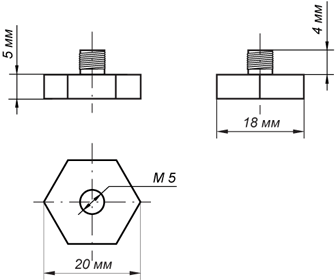Magnet is intended for simple and reliable installation of accelerometer on the surface under examination. The body is made of stainless steel, pull force is 60 N.
Instruction on Magnet Accelerometer Mounting
1. Make sure that the object surface is flat and clean in the accelerometer installation place. Otherwise, treat and clean the surface. The accelerometer base must also be clean.
2. Fix the accelerometer on the top of magnet and tighten a threaded connection with a wrench. The wrench must be used only if needed and with great caution. For retention of a large value of fixed accelerometer resonance frequency, it is recommended to lubricate the accelerometer base and the object surface in the magnet installation place with a thin layer of consistent silicone grease.

![]()
Application
Survey researches of mechanical fluctuations, in particular researches aimed at determining installation places of accelerometers used for control and monitoring of mechanical fluctuations of machine and other equipment.
Advantages
- Quick installation with a possibility of relocation.
2. Retention of a relatively high value of fixed accelerometer resonance frequency (in particular, during installation on flat surfaces) despite apparently low rigidity of mechanical connection of magnet.
3. Retention of wide operating dynamic range of the accelerometer.
Disadvantages
- The surface of the studied or tested object must be made of ferromagnetic material. Otherwise, attach a disc or ferromagnetic plate on the object surface.
2. During the repeated installation with magnet, it’s hard to find the absolutely identical location of the accelerometer.
3. Mass of the fastening magnet provides additional load to the researched or tested object. This load can cause difficulties in researches of mechanical fluctuation of light constructions, thin plates, sheets etc. Note that mass of magnet is 9 grams.
Notes
1. When using the magnet, you can provide reliable electrical isolation between accelerometers and the researched or tested object. For this purpose, use any solid insulating plate.
2. With the magnet, you can install the accelerometer on any deformed surfaces, e.g. pipes, etc. But the operating frequency range of the fixed accelerometer becomes narrow as bending radius of the test object surface decreases.
